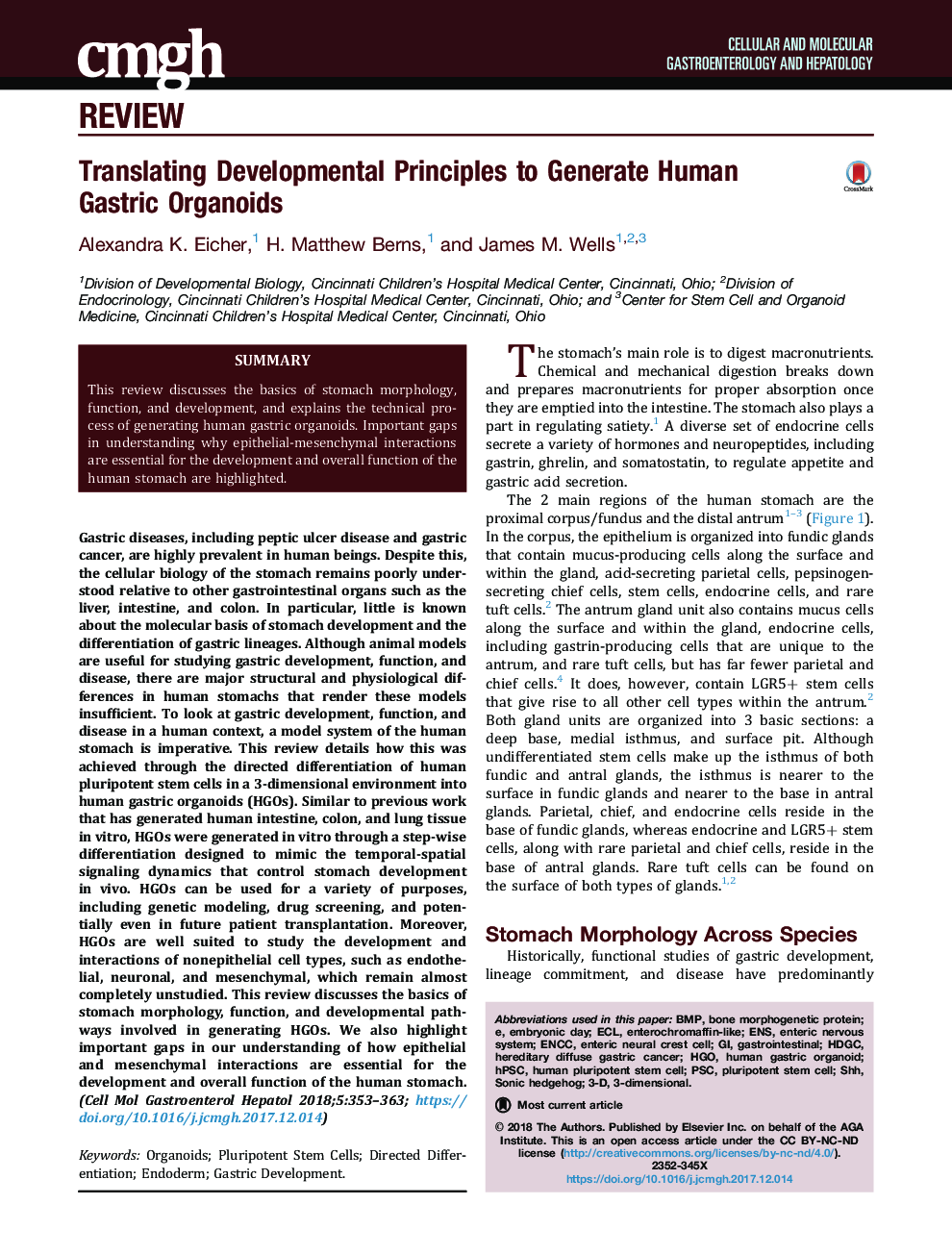| کد مقاله | کد نشریه | سال انتشار | مقاله انگلیسی | نسخه تمام متن |
|---|---|---|---|---|
| 8376271 | 1543155 | 2018 | 11 صفحه PDF | دانلود رایگان |
عنوان انگلیسی مقاله ISI
Translating Developmental Principles to Generate Human Gastric Organoids
دانلود مقاله + سفارش ترجمه
دانلود مقاله ISI انگلیسی
رایگان برای ایرانیان
کلمات کلیدی
ENCCHDGCOrganoidsHpSCENSECLPSCHgO3-D3-dimensional - 3 بعدیHereditary diffuse gastric cancer - ارثی منتشر شده سرطان معدهenterochromaffin-like - انتروکرومافین مانندEndoderm - اندودرمDirected differentiation - تمایز مستقیمShh - خیرGastrointestinal - دستگاه گوارشembryonic day - روز جنینیHuman pluripotent stem cell - سلول بنیادی پلورپوفنت انسانیPluripotent stem cells - سلول های بنیادی پلوروپتوژنPluripotent stem cell - سلول های بنیادی پلوروپتوژنenteric nervous system - سیستم عصبی روده ایsonic hedgehog - صدای جیر جیرBMP - مدیریت فرایند کسب و کارBone morphogenetic protein - پروتئین مورفوژنیک استخوان
موضوعات مرتبط
علوم زیستی و بیوفناوری
بیوشیمی، ژنتیک و زیست شناسی مولکولی
بیوشیمی، ژنتیک و زیست شناسی مولکولی (عمومی)
پیش نمایش صفحه اول مقاله

چکیده انگلیسی
Gastric diseases, including peptic ulcer disease and gastric cancer, are highly prevalent in human beings. Despite this, the cellular biology of the stomach remains poorly understood relative to other gastrointestinal organs such as the liver, intestine, and colon. In particular, little is known about the molecular basis of stomach development and the differentiation of gastric lineages. Although animal models are useful for studying gastric development, function, and disease, there are major structural and physiological differences in human stomachs that render these models insufficient. To look at gastric development, function, and disease in a human context, a model system of the human stomach is imperative. This review details how this was achieved through the directed differentiation of human pluripotent stem cells in a 3-dimensional environment into human gastric organoids (HGOs). Similar to previous work that has generated human intestine, colon, and lung tissue in vitro, HGOs were generated in vitro through a step-wise differentiation designed to mimic the temporal-spatial signaling dynamics that control stomach development in vivo. HGOs can be used for a variety of purposes, including genetic modeling, drug screening, and potentially even in future patient transplantation. Moreover, HGOs are well suited to study the development and interactions of nonepithelial cell types, such as endothelial, neuronal, and mesenchymal, which remain almost completely unstudied. This review discusses the basics of stomach morphology, function, and developmental pathways involved in generating HGOs. We also highlight important gaps in our understanding of how epithelial and mesenchymal interactions are essential for the development and overall function of the human stomach.
ناشر
Database: Elsevier - ScienceDirect (ساینس دایرکت)
Journal: Cellular and Molecular Gastroenterology and Hepatology - Volume 5, Issue 3, 2018, Pages 353-363
Journal: Cellular and Molecular Gastroenterology and Hepatology - Volume 5, Issue 3, 2018, Pages 353-363
نویسندگان
Alexandra K. Eicher, H. Matthew Berns, James M. Wells,